Thinking About Landscaping in a Fire-Prone Area? Here are Key Factors to Consider

This article was first published by the nonprofit newsroom LAist on July 24, 2025 and is republished here with permission.
Six months after the Eaton and Palisades fires, more than 10,000 parcels have been cleared of debris and rebuilding efforts are moving forward.
While home hardening — installing fire resistant vents and enclosing eaves, for instance — is going to give a structure its best chances of surviving the next firestorm, how homeowners design their yards matters as well.
If they’re doing it right, the plants will not only resist bursting into flames, but could also act as a defensive wall, keeping embers away from structures.
How homes burn
A home often ignites either through direct contact with flames or ember intrusion — when burning pieces of plant matter squeeze into crevices.
What does that mean for landscaping?
First — clear anything easily burnable within 5 feet of the house, an area known as Zone 0. This includes wood arbors, wood fences, sheds and plants that can catch on fire and send flames into eaves and melt windows. And consider installing non-combustible concrete or gravel around the first 5 feet of a home.
Picking the right plants
Farther away from the house — Zones 1 and 2 — you’ll want to consider plants that hold onto a lot of water and resist burning.
That could mean planting succulents and surrounding them with gravel or decomposed granite, which isn’t going to smolder like mulch.
However, you can opt for a much more verdant palette, which could include your favorite fruit trees or even native plants, which are also going to improve the biodiversity of your yard, offering food to native animals and insects, while providing some fire resistance.
Here in Southern California, that’s often going to mean choosing plants found in the chaparral or coastal sage scrub plant communities.
“Generally, we use evergreen native plants,” said Greg Rubin, founder and president of California's Own Native Landscape Design Inc.
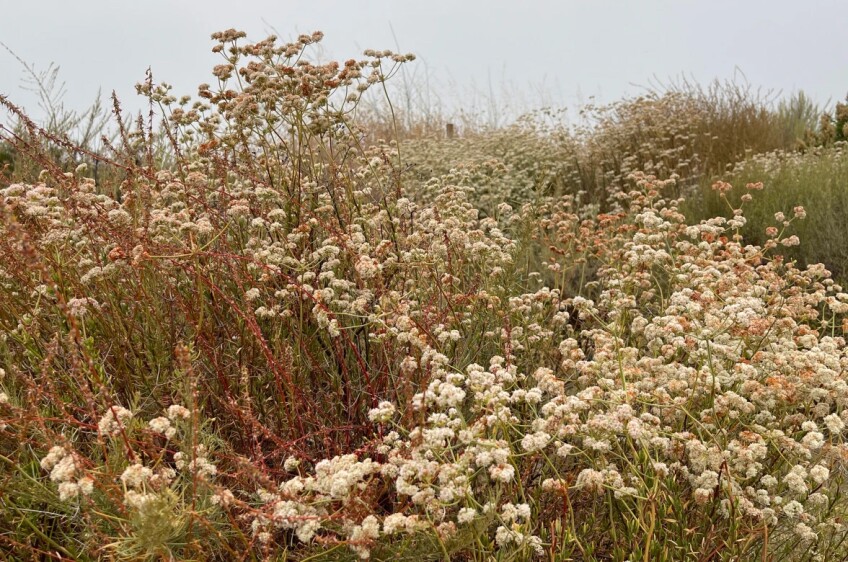
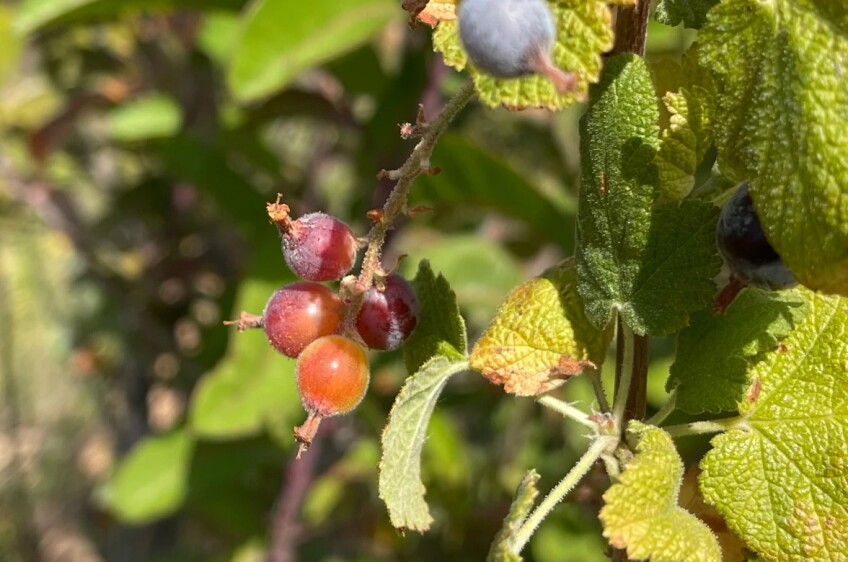
Toyon, lemonade berry, coffee berry and oaks are just a few of the native plants Rubin considers when working with residential clients, as evergreen species tend to hold onto moisture.
But for those looking for the perfect fire-resistant plant list, Rubin says there are other considerations to make.
“What surprises people is when I tell them that it's not about plant lists. It's not about species. It's about hydration,” he said.
Besides the biodiversity benefits, he’s partial to native plants because he’s found that they don’t require much water to reach a level of moisture that offers some fire resistance.
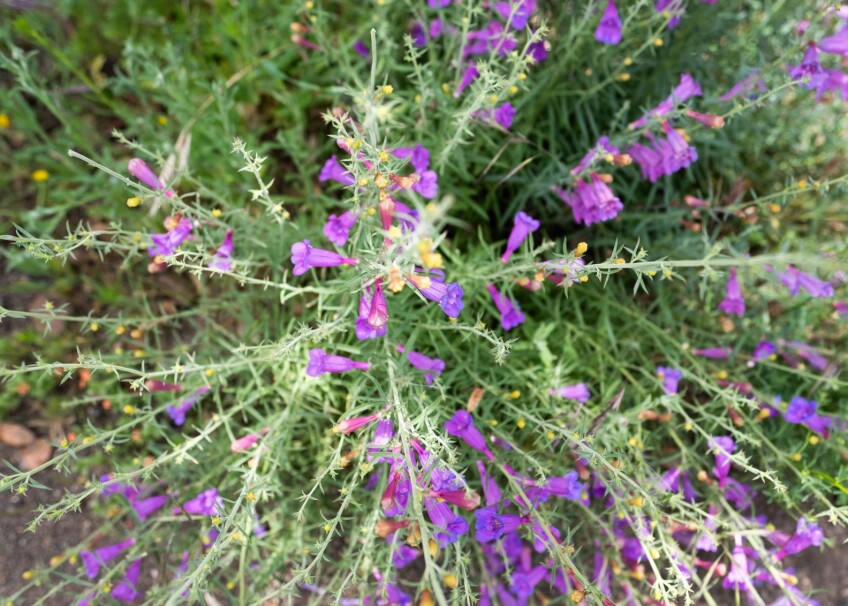
Irrigation is crucial
Throughout the year, the amount of moisture plants hold onto changes — and the drier the plant, the easier it catches on fire.
One reason we see such bad wildfires in the fall is because many of our landscapes have dried to critical levels.
Rubin has been involved in research that investigated the fire resilience of California native plants, comparing moisture levels of irrigated natives versus untreated plants on nearby landscapes heading into our driest months.
Understandably, the irrigated plants had a higher level of moisture. For instance, while untreated laurel sumac had around 70% moisture retention (critical dryness is between 60% and 80%), irrigated sumac was around 130%, indicating it was more likely to resist fire.
The disparities weren’t as extreme for big berry manzanitas, scrub oak or California buckwheat in the study, but they were still there.
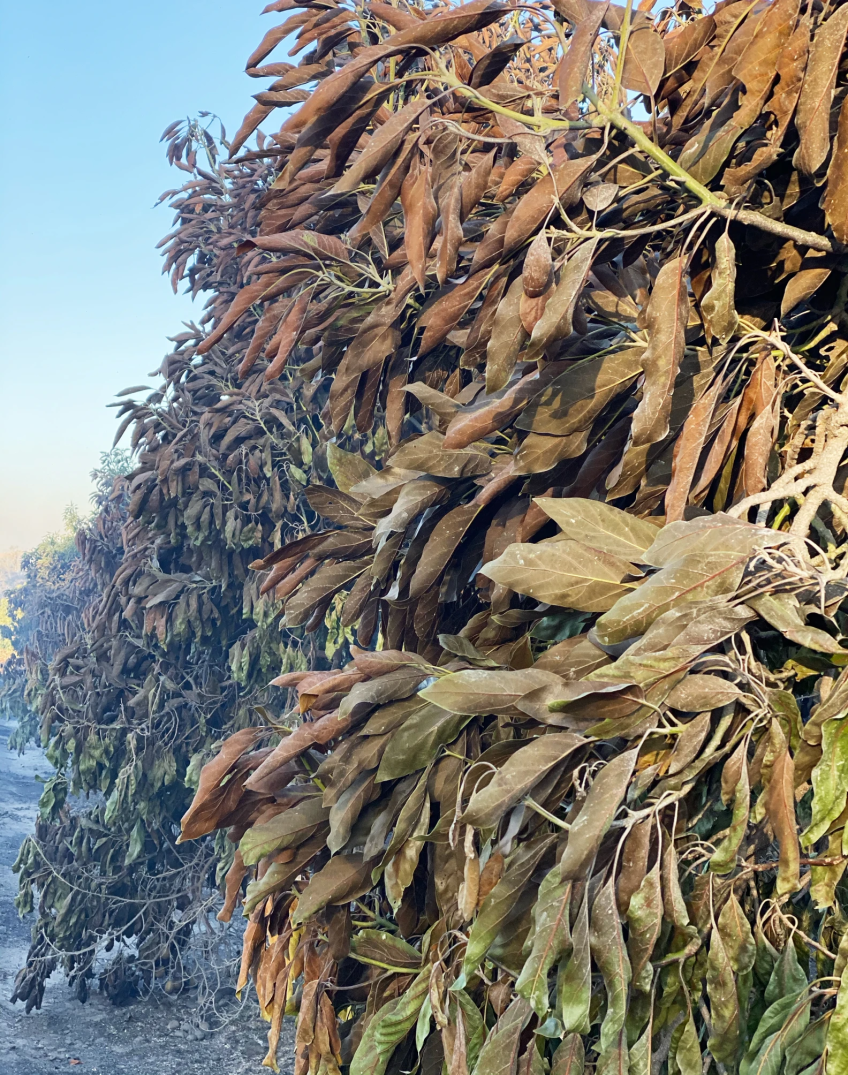
Another benefit of irrigation is that it can forestall summer dormancy, which is when plants stop putting out green growth in an effort to save moisture. Those brown, desiccated dormant bits can be quick to catch fire.
So whether you choose natives or not, the message is the same: irrigate, irrigate, irrigate.
Rubin recommends using overhead rotators to simulate summer rainfall, turning them on for 30 to 40 minutes once a week in inland areas, and once every two weeks along the coast. Not only are you keeping the plants irrigated, but you’re keeping any mulch moist as well.
For the water-conscientious landscaper, consider using greywater.
Regular landscape maintenance is also important, particularly thinning and dead wood removal, which can reduce flammability.
Building a fortress of green
There are no guarantees your plants won’t catch fire. But if you have a well irrigated and maintained landscape, larger shrubs and trees at the edges of properties can protect a structure from embers.
Douglas Kent, professor and author of Firescaping: Protecting Your Home With a Fire-Resistant Landscape, surveyed the Eaton Fire area and saw multiple instances where trees seemed to have protected homes.
“There was a southern magnolia that lost its life in the fire, but the structure survived and everything below it did. So it took all the energy out of the atmosphere, screened the firebrands, and really took the brunt,” Kent said.
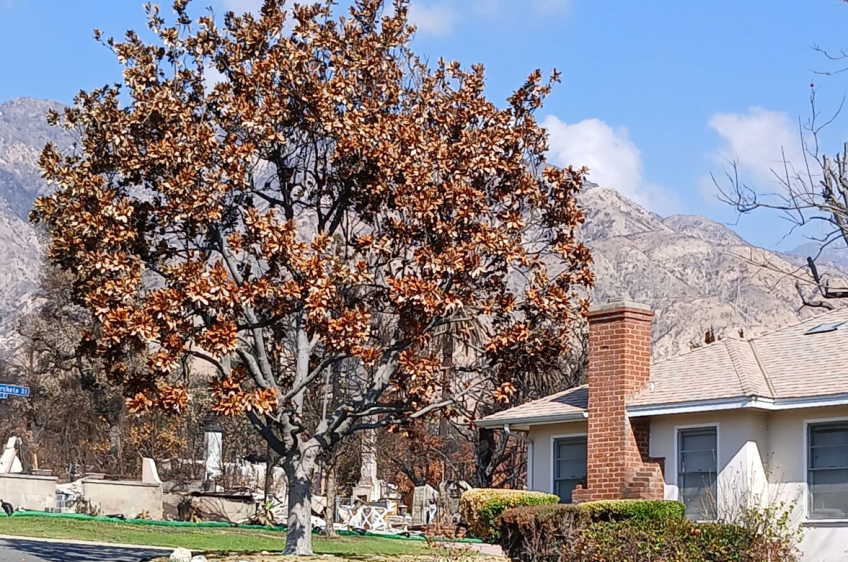
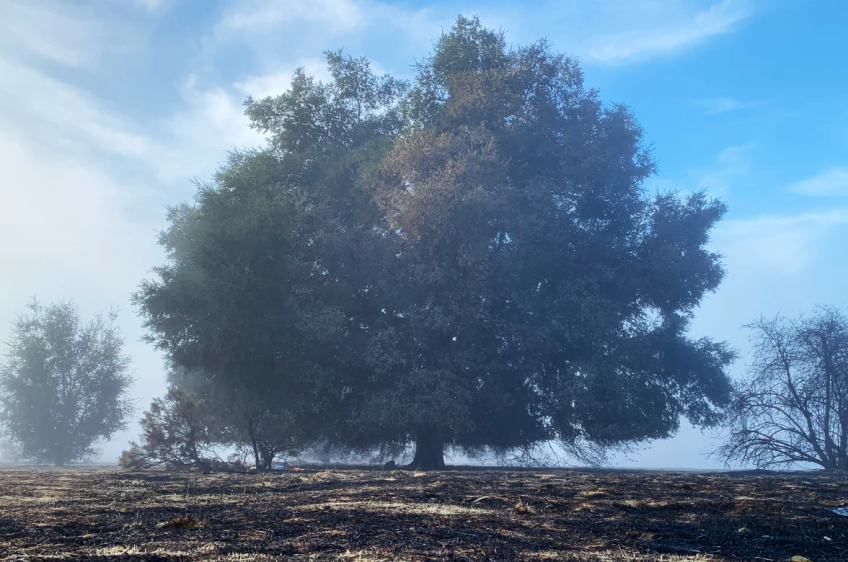
Oaks did particularly well throughout the Eaton Fire burn area, he said. As did well-irrigated and maintained fruit trees.
Years ago, I wrote about banana trees being used as green fire breaks: well-irrigated plants that resist catching on fire, while feeding the community.
Something to consider as we’re tasked with rebuilding landscapes in an increasingly fire-prone world.

